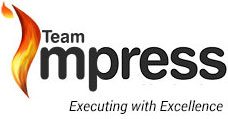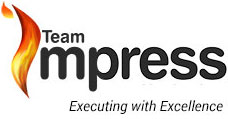You’re in the driver’s seat. You know how to market a management consulting firm. But what happens when the culture of the organization you’re supporting works against you?
This post is about the “up or out” culture common to management consulting firms, and why I don’t think it should be applied to your department, the marketing team.
Some staff churn is inevitable. Some can be prevented with the opposite of “up or out” policy – Optimal Performance.
Let’s make sure we’re on the same page here. There’s a difference between organic churn and structured churn.
Organic Churn
This is when people leave because they want to. Their long hours don’t work with their lifestyle. Or, they want to move on into a different career. They might have received a better offer. This is something you have little to no control over as a manager.
Structured Churn
Your management consulting firm is likely set up in a pyramid structure. You hire lots of young consultants at the bottom, then they compete to move up the ranks to senior consultant, then manager of a business unit, then junior partner, and eventually senior partner.
They either move up … or out if they don’t bring as much value to the firm as their peers.
As former consultant at Boston Consulting Group Kenton Kivestu explains, this structure can make sense for consultants as it maintains a few high producers at the top and plenty of workers to execute at the bottom.
Optimal Performance
By contrast, Optimal Performance is all about identifying what value your people might be able to bring to the organization that they aren’t currently because of factors outside of their control.
Sometimes churn is natural, even best for everyone. But sometimes it isn’t best for either the staff or the organization. Now, if your up or out policy is working for your management consulting firm as applied to your consultants, great. Just please don’t apply it to your marketing arm!
Here’s why.
Ideal marketing organization structures don’t look like pyramids. Optimal Performance looks … different.
Management consulting is about solving problems. A pyramid is what happens when you have lots of problems to solve and everyone is competing to be the best and fastest at solving them. You win, you move up, you find another, bigger problem to solve.
Marketing is less about solving isolated problems and more about building and sustaining overall momentum for the long term. That makes teamwork more valuable than individual success, which is why organizational structures sometimes look wider, taller, or flat as a pancake. Connection takes priority over competition.
As you lead your marketing team, your task is to set the conditions that foster these strong connections between key members.
Set conditions for your marketing team’s success with the Optimal Performance PEP Plan.
PEP = people, environment and processes. When all three are in place, you have a much more powerful effect than structured churn could ever have on a marketing team.
1. Get your people where they need to be, no matter what.
Promotion in the traditional sense is not always the best plan. Why? Because Optimal Performance prioritizes recognizing a person’s strengths and weaknesses and putting them in an appropriate role over reinforcing the “corporate ladder” mentality. The alternative often results in forcing team members to work in ways that are natural weaknesses.
For example, if your content manager is really good and really happy in that role, think twice before you “reward” that person with a promotion to VP of Creative. Management requires a completely different set of skills. Having someone in that role who doesn’t have the temperament to lead can put stress on that team member and create a chaotic and unpleasant environment.
By contrast, restructuring a role to remove leadership responsibility might be the best thing for the individual and the organization. If the change is a strategic move, it will ultimately deliver your firm more leads and should be looked at as advancement. It makes sense to at least maintain that team member’s pay level, if not raise it.
2. Create an environment that is conducive to a strong team.
Not everyone excels in a highly competitive environment. Some research suggests one half of the workforce – women – are less successful in teams that are forced to go head-to-head. Their creative output diminishes. By contrast, they do much better as a team. This is likely true of many men as well.
An internal drive toward excellence is good, but don’t push it at the cost of creative output. Building and sustaining momentum, consistently developing new ways to get and keep the market’s attention requires a different skill set from the “eat-or-be-eaten” hunter mentality.
3. Standardize processes to set team members on equal footing.
On the one hand, you have your consultants, whom you encourage to have an entrepreneurial spirit. They often work independently and can establish their own processes. Their approach to client engagement starts from a foundation of training, but it evolves into what they make it.
On the other, you have your marketing team. Individualism is not the value you most want to encourage. Make processes standard and predictable so no one has to guess at how to do it best. If a member of your team has a great idea on changing those processes, it should be for the benefit of all.
You may work for a management consulting firm, but don’t model your marketing team after the “up or out” pyramid.
Marketing team members who are anxious about being “managed out” if they underperform might be motivated to work harder … but more often, they’re not.
If you want an Optimal Performance Team, you can’t assume your people are in the right place, or that your environment will naturally drive them to excel, or that processes will work themselves out.
In marketing, you’ll only achieve your goals by creating optimal conditions for ongoing creativity. It starts by identifying each team member’s Optimal Performance DNA™ so you can be assured you have the right people in the right place … hopefully, for the long haul.
That’s what we do here at Team Impress. It’s part of our Predictable Profits Sales System to help management consulting firms like yours attract up to 67% more market share, double sales and build motivated marketing and sales teams.
Wondering what opportunities you might be missing? We’ve compiled a list of 73. Find out how well you measure up by downloading the FREE Double Your Sales Checklist below.


